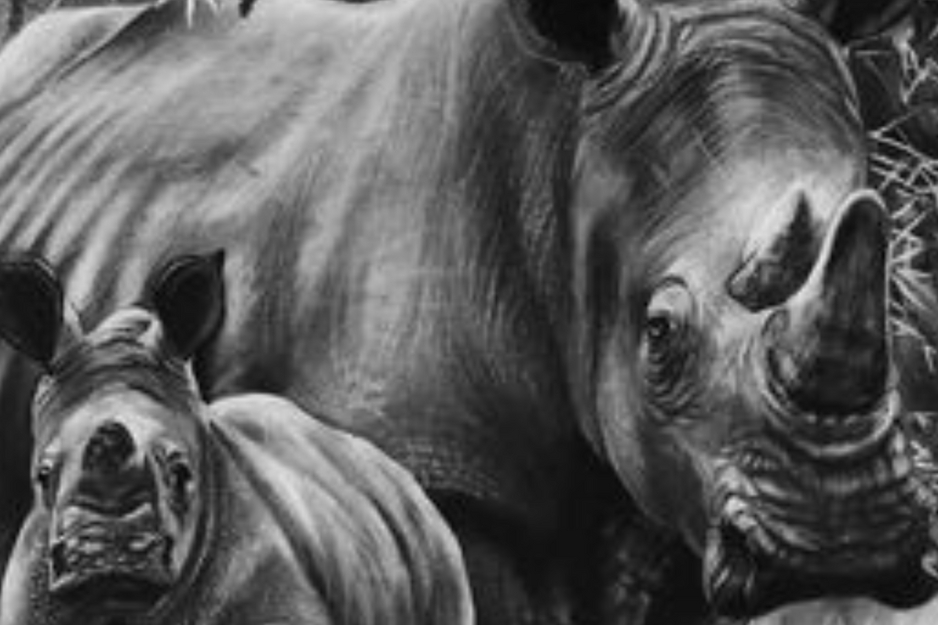Zimbabwe is ""Home"" to a diverse range of wildlife, including elephants, lions, rhinos, and buffalo. This wildlife is an important part of Zimbabwe's ecosystem and culture. However, it is also under threat from poaching, habitat loss, and climate change.

Painting by Tonderai Mujuru - Mujuart
What is wildlife conservation?
Wildlife conservation is the practice of protecting wild animals and their habitats. It is important for a number of reasons, including:
- To maintain biodiversity: Wildlife plays a vital role in maintaining the balance of nature. For example, predators help to control the populations of their prey, and herbivores help to keep plant populations in check.
- To protect natural resources: Wildlife habitats, such as forests and wetlands, provide important ecosystem services, such as clean air and water.
- To promote sustainable development: Wildlife tourism can be a valuable source of income for developing countries. It creates jobs and supports local economies.
How has wildlife conservation come about in Zimbabwe?
Zimbabwe has a long history of wildlife conservation. The first national park in Zimbabwe, Hwange National Park, was established in 1928. In 1975, the Zimbabwe Parks and Wildlife Management Authority (ZPWMA) was created to manage Zimbabwe's national parks and wildlife resources.
The ZPWMA is responsible for a number of conservation initiatives, including:
- Anti-poaching patrols: ZPWMA rangers patrol Zimbabwe's national parks and wildlife areas to deter and apprehend poachers.
- Community conservation programs: The ZPWMA works with local communities to promote sustainable wildlife management and to develop economic opportunities that benefit from wildlife.
- Conservation education: The ZPWMA educates the public about the importance of wildlife conservation.
How is wildlife conservation implemented in Zimbabwe?
Wildlife conservation in Zimbabwe is implemented through a combination of legislation, community programs, and education.
Legislation: Zimbabwe has a number of laws in place to protect wildlife, including the Parks and Wildlife Act and the Endangered Species Act. These laws prohibit poaching, habitat destruction, and the trade in illegal wildlife products.
Community conservation programs: The ZPWMA works with local communities to develop and implement conservation programs. These programs can include things like community wildlife management areas, where local communities are given the authority to manage wildlife resources on their own land.
Education: The ZPWMA educates the public about the importance of wildlife conservation through school programs, public awareness campaigns, and ecotourism initiatives.
The role of art in wildlife conservation
Art can play an important role in wildlife conservation by raising awareness of the importance of wildlife and the threats that it faces. For example, Zimbabwean sculptors and painters often use wildlife as a subject matter. This art can help to educate people about Zimbabwe's wildlife and to inspire them to support conservation efforts.
The importance of wildlife for the ecosystem
Wildlife plays an important role in the Zimbabwean ecosystem. For example, elephants help to disperse seeds and to create new water sources. Lions help to control the populations of their prey, such as zebra and wildebeest. And herbivores, such as giraffes and impalas, help to keep plant populations in check.
The importance of wildlife for tourism
Wildlife tourism is a major source of income for Zimbabwe. Tourists come to Zimbabwe from all over the world to see the country's wildlife. This tourism revenue helps to support conservation efforts and to create jobs for local people.
Conclusion
Wildlife conservation in Zimbabwe is a complex and challenging task. However, it is essential to protect Zimbabwe's wildlife for the sake of the ecosystem, the economy, and future generations.